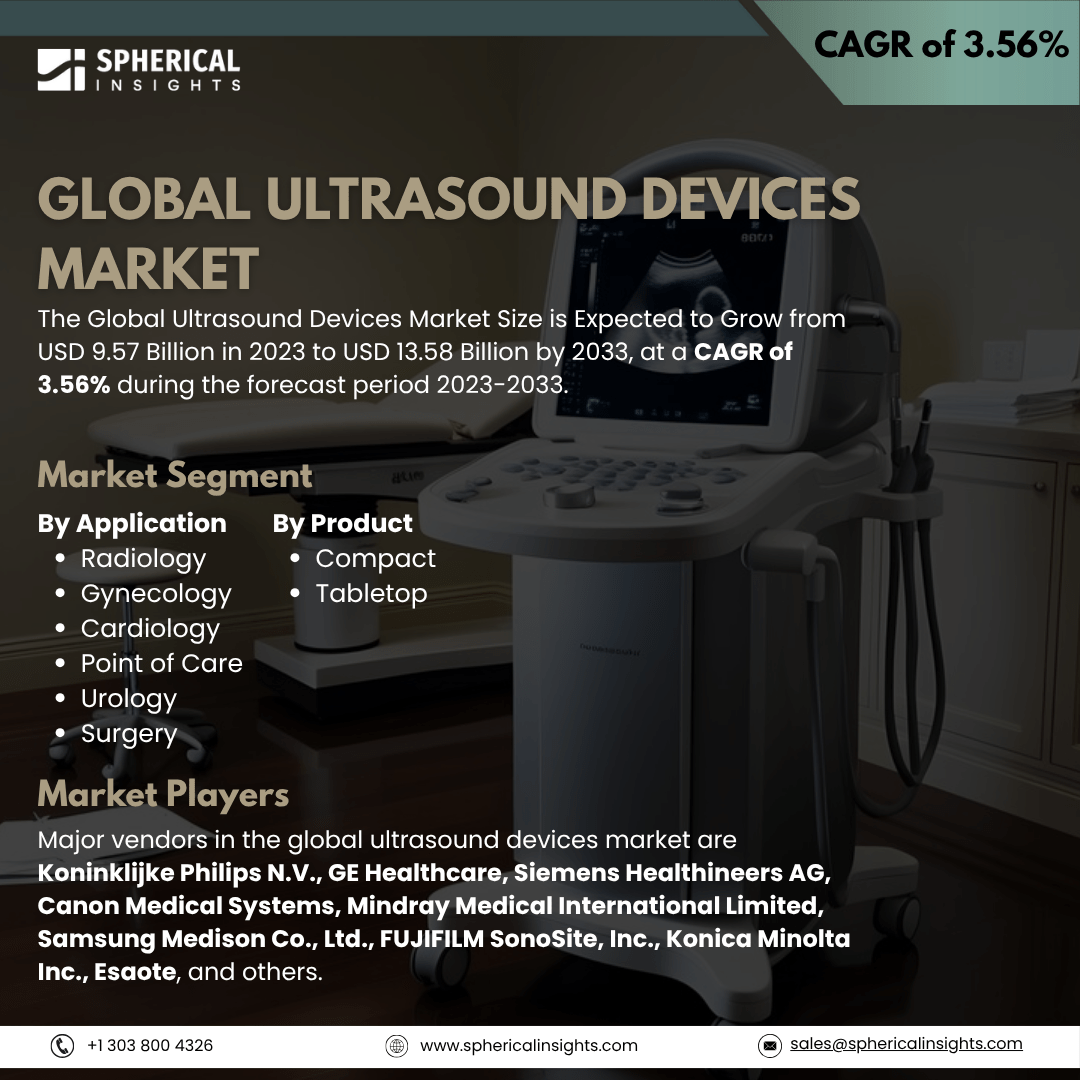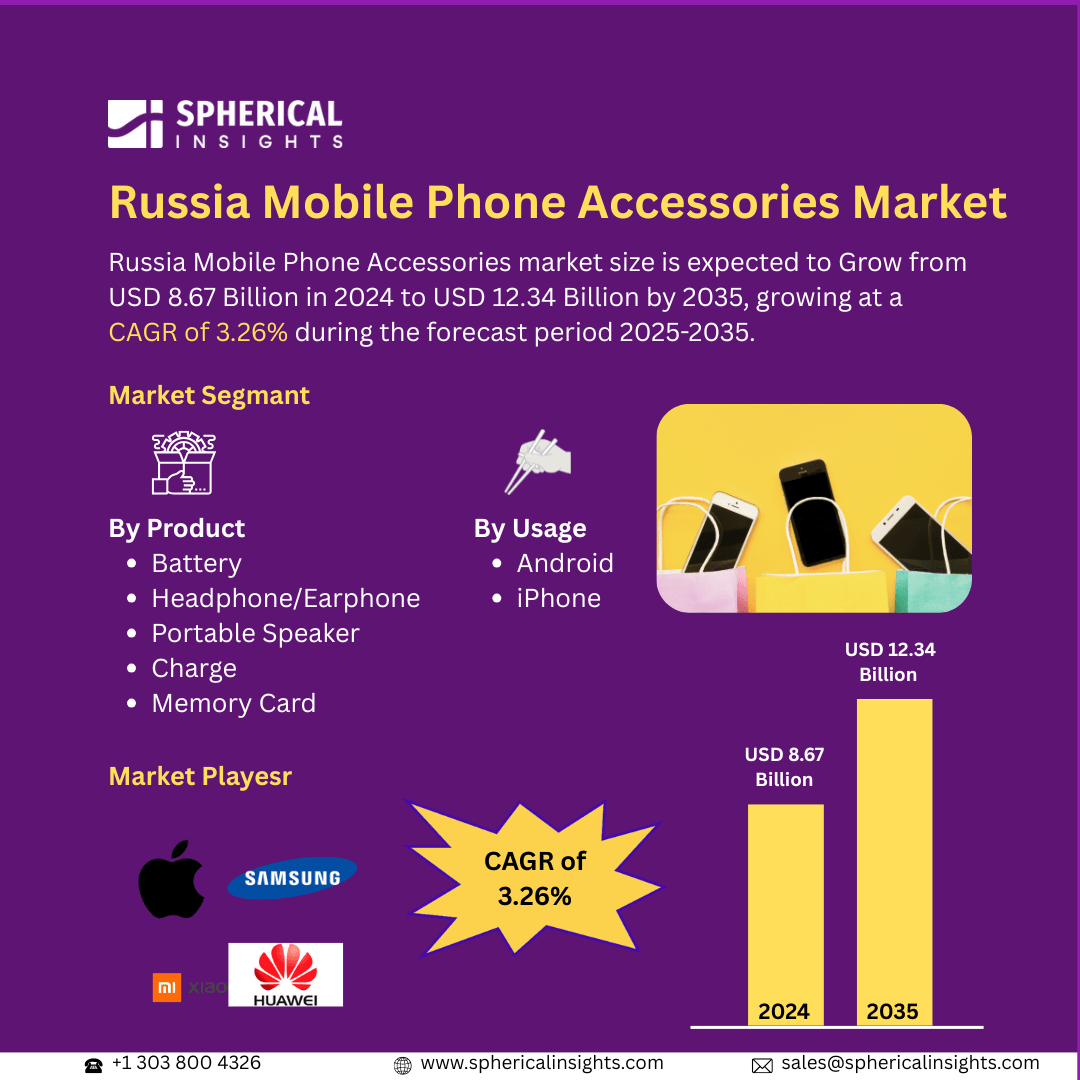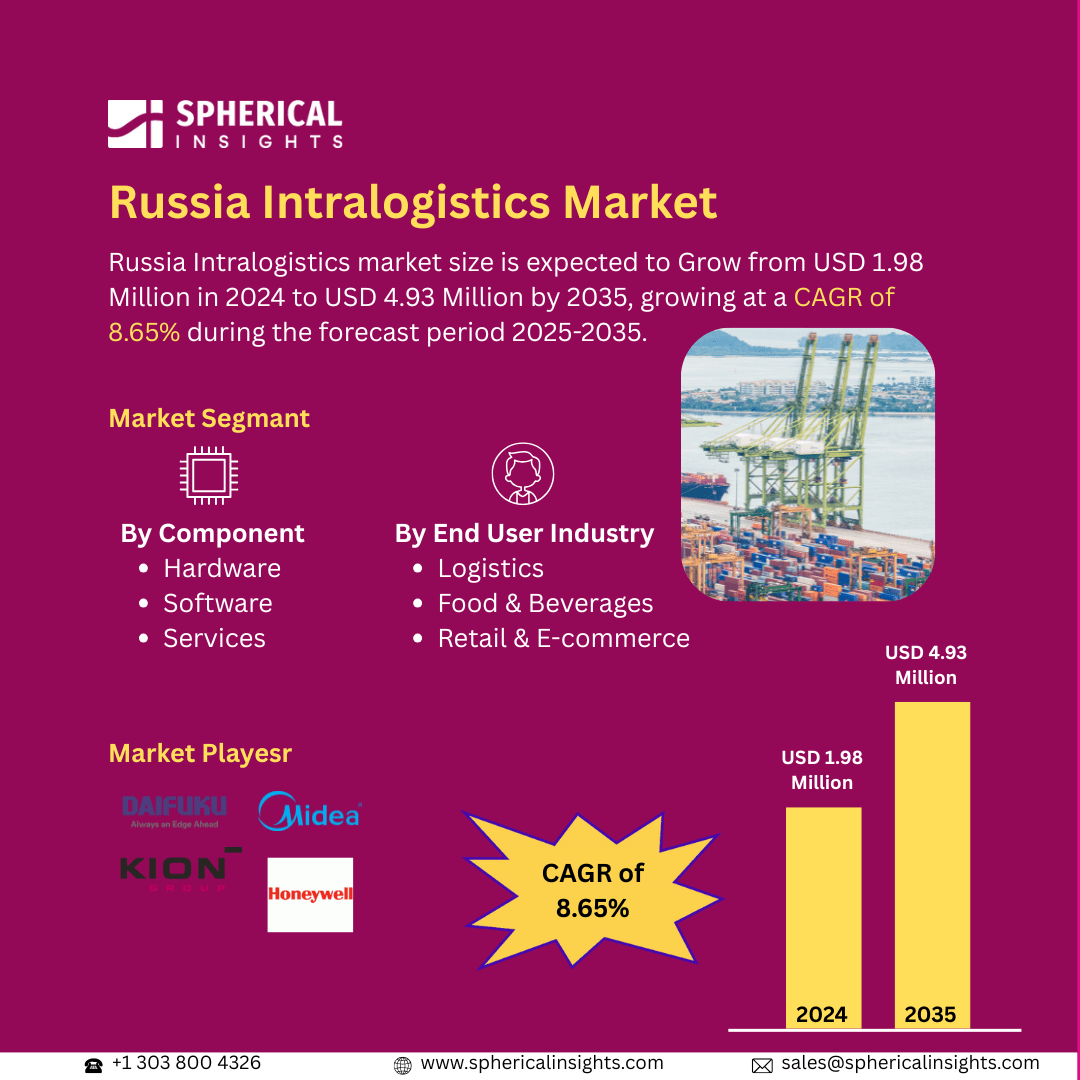Global Ultrasound Devices Market Size To Exceed USD 13.58 Billion by 2033
According to a research report published by Spherical Insights & Consulting, The Global Ultrasound Devices Market Size is Expected to Grow from USD 9.57 Billion in 2023 to USD 13.58 Billion by 2033, at a CAGR of 3.56% during the forecast period 2023-2033.
Browse 210 Market Data Tables And 45 Figures Spread Through 190 Pages and In-Depth TOC On the Global Ultrasound Devices Market Size, Share, and COVID-19 Impact Analysis, By Product (Compact and Tabletop), By Application (Radiology, Gynecology, Cardiology, Point of Care, Urology, Surgery, and Others), and By Region (North America, Europe, Asia-Pacific, Latin America, Middle East, and Africa), Analysis and Forecast 2023 - 2033.
The worldwide need for devices that produce images of internal organs and tissues using high-frequency sound waves for diagnostic and therapeutic purposes is included in the ultrasound devices market. This market comprises the actual ultrasound devices as well as associated parts like gels and transducers/probes. An ultrasound machine is a medical device that produces images of the inside of the body using high-frequency sound waves. These sound waves are transmitted into the body and bounce off organs, tissues, and blood vessels. These are inaudible to humans. The machine then transforms the echoes, or reflected waves, into pictures. Doctors can diagnose a variety of medical conditions and see internal structures through to this process. Furthermore, the market is driven by the growing prevalence of chronic and lifestyle disorders, as well as the growing use of ultrasound equipment for diagnostic imaging and treatment. Increased demand for minimally invasive procedures and regular advancements in ultrasound imaging technology are additional factors driving market expansion. Compared to other diagnostic imaging systems, ultrasound is a leading diagnostic tool in medical imaging because it is quicker and less expensive. In addition, it is safer than other imaging technologies because it doesn't use magnetic fields or ionizing radiation. However, the market for ultrasound devices faces several obstacles, such as the requirement for more skilled workers, competition from other imaging technologies, the high expense of sophisticated equipment, and legal restrictions.
The tabletop segment dominated the largest share in 2023 and is anticipated to grow at a significant CAGR during the forecast period.
Based on the product, the global ultrasound devices market is divided into compact and tabletop. Among these, the tabletop segment dominated the largest share in 2023 and is anticipated to grow at a significant CAGR during the forecast period. This is due to the increased use of tabletop equipment for diagnostic imaging by patients worldwide and the higher adoption rate of this equipment in hospitals and clinics.
The radiology segment held the highest share in 2023 and is anticipated to grow at a significant CAGR during the forecast period.
Based on the application, the global ultrasound devices market is divided into radiology, gynecology, cardiology, point of care, urology, surgery, and others. Among these, the radiology segment held the highest share in 2023 and is anticipated to grow at a significant CAGR during the forecast period. This is due to the growing number of radiology centers and the growing use of this technology for medical diagnostics and general imaging.
North America is anticipated to hold the highest share of the global ultrasound devices market over the projected period.
North America is anticipated to hold the highest share of the global ultrasound devices market over the projected period. A growing number of cancer cases and the existence of numerous competitors in the area are the main drivers of the regional markets' expansion. Increased healthcare spending, improved knowledge of different diagnosis techniques, and advantageous reimbursement policies are anticipated to propel regional market expansion.
Asia Pacific is estimated to grow at the fastest CAGR in the global ultrasound devices market during the forecast period. This is because there is a greater need for better imaging equipment. Important players are also implementing various tactics to increase their visibility in this area. The region is becoming more appealing for research studies due to a number of factors, including low research costs, laxer regulations, and more government funding for the growth of the R&D sector in the individual nations.
Company Profiling
Major vendors in the global ultrasound devices market are Koninklijke Philips N.V., GE Healthcare, Siemens Healthineers AG, Canon Medical Systems, Mindray Medical International Limited, Samsung Medison Co., Ltd., FUJIFILM SonoSite, Inc., Konica Minolta Inc., Esaote, and others.
Key Target Audience
- Market Players
- Investors
- End-users
- Government Authorities
- Consulting and Research Firm
- Venture capitalists
- Value-Added Resellers (VARs)
Market Segment
This study forecasts revenue at the global, regional, and country levels from 2023 to 2033. Spherical Insights has segmented the global ultrasound devices market based on the below-mentioned segments:
Global Ultrasound Devices Market, By Product
Global Ultrasound Devices Market, By Application
- Radiology
- Gynecology
- Cardiology
- Point of Care
- Urology
- Surgery
- Others
Global Ultrasound Devices Market, By Regional
- North America
- Europe
- Germany
- UK
- France
- Italy
- Spain
- Russia
- Rest of Europe
- Asia Pacific
- China
- Japan
- India
- South Korea
- Australia
- Rest of Asia Pacific
- South America
- Brazil
- Argentina
- Rest of South America
- Middle East & Africa
- UAE
- Saudi Arabia
- Qatar
- South Africa
- Rest of the Middle East & Africa



